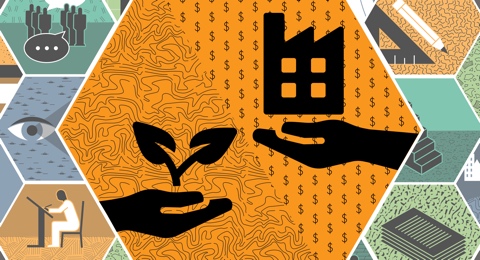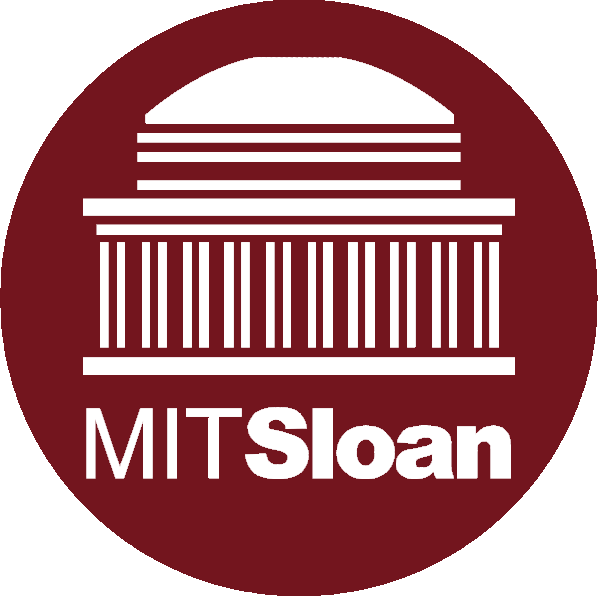Is this real or virtu-real?

How our work is changing as we combine physical and virtual
Last month we talked about how a hybrid work model is the hardest in terms of relationships, but it may also be the hardest in terms of technology and infrastructure—which is what we talk about in this month’s On Our Minds.
On our minds
The term infrastructure encompasses both in and out-of-office “scaffolding,” such as policy and standards, technology solutions, and physical space. So what does hybrid work actually look like in terms of infrastructure? We track three trends that were well underway pre-pandemic, but have been accelerated by mass remote work. Now they’re even more prevalent in the brave new world of hybrid.
1. Spending more on tech and less on real estate
During the Great Recession, now over a decade ago, many companies let full-time workers go, choosing to use independent contractors instead. The recession catalyzed our current “gig-economy” and was the most recent workplace shift, prior to COVID. Fewer in-office employees meant less commercial real estate needs, and the “corporate footprint” has continued shrinking ever since.
As we move to a hybrid model, with less employees in the building at any given time, square feet per employee equation will shrink even more. With vacillating pandemic concerns, this calculation has become even more of a moving target. Even if the amount of square feet per employee in-office at any given time has grown during the pandemic, with many companies releasing space, the overall number of square feet per employee has continued to shrink. (If you’re wondering what companies can do with all that under-used real estate, we have some ideas. In 2017, we helped Verizon transform their surplus space to coworking venues.)
Meanwhile, companies have been spending more on technology per employee for some time. This was the case long before sales of webcams and cloud-based collaboration equipment skyrocketed, as we’ve embraced remote work. Imaging what's next with many key employees moving away from their home office regions permanently.
In upcoming years, we expect virtual reality to be increasingly incorporated into our work-lives, so that we can participate remotely in a more tactile and physically activated way. Moving past keyboards and screens to more sophisticated modes of digital interaction will be an essential component of the day-to-day experience of our future hybrid work.
2. Shifting working models—to coworking, ABW, and remote
We've often been amused by the observation that people pay to use coworking spaces, whereas you have to pay them to come into to traditional offices. What is it about coworking that makes it so much more attractive? Early into the coworking trend, the Harvard Business Review identified some key factors. Among them are, a diversity of worker capabilities that allows for the free flow of ideas, without the direct competition that may come from colleagues competing for the same choice projects or promotions; and control of when and how you work. These benefits can be replicated within single-company offices, through work processes that encourage collaboration rather than competition, as well as offering more flexible physical spaces and more employee choice about when and where to work.
Another coworking/hospitality industry principle that should be incorporated into our post-pandemic offices is self-service.
Successful offices will take a hint from hotels which make sure spaces are organized in intuitive, “customer friendly” ways, so no one needs to ask where a restroom or cafe lounge is. Supplies should be in the same spot on every floor, to accommodate employees working from different areas every time they (sporadically) come to the office.
We’ve discussed Activity Based Working for years, so we won’t rehash too much here. One might argue that the future of real estate is moving from location, location, location to diversity, diversity, diversity. When people primarily come into the office for collaborative work or meetings, there’s a danger of scheduling inefficiency, with meetings spaced hours apart. Therefore, offices need to offer comfortable, inspirational collaborative spaces as well as the amenities of home offices—non-distracting spots for video calls, a private space to do a few hours of deep focused work, snack bars, rest spaces, yoga nooks, etc.
3. Working from anywhere, with an emphasis on third spaces
These last two years we’ve all heard a lot about “work from home” but not enough about “work from anywhere.” As we return to the office in some capacity, we are also likely to work more from third spaces (neither our home nor office), for both pleasure and convenience. Common third places are cafes, libraries, a friend’s home, or even parks.
If you thought renting space by the month was flexible, consider by the hour. Last year, PLASTARC needed a calm space to do a webinar, so we checked into a hotel room, just for the day. They had a special rate for 7AM to 4PM use, which included the room and all on-site amenities: webinar and a workout anyone? Third spaces meet our social needs and respond to the restlessness we may feel, being cooped up at home, often without the long commute and with less of an “obligatory” vibe than the office.
Change is hard, but it’s also exciting. The early days of COVID-inspired telework put a lot of responsibility on our technology skills and our HR departments. In the next generation of hybrid work, we look forward to seeing more and more creativity put towards making the physical and digital experience compelling.
From the archives
We’ve been talking about alternatives to in-office work for a while now. In February of 2018, we covered the history of coworking on the Remote Office Podcast, and last year, we weighed in on equitable practices for GCUC Coworking Podcast. Our December 2020 newsletter was all about remote work, as was our May 2019 newsletter. Then in May of 2020 we wrote about how to stay healthy when working from home.
And if you feel like your sense of humor has gone the way of landlines, DVDs, and 9 to 5 workdays, here’s a podcast to help you get your groove back. ‘Till next month!
In Case You Missed It
With so much shifting so quickly, sometimes it’s hard to focus. This is for you, if you’re playing catch-up.

Mental Health and the Workplace
PLASTARC led this IFMA WE discussion on the importance of brining mental health to the center of the future workplace conversation.

Collaborating for Equity
Catch up on this AIANY series of panels on decolonizing design, including this panel about how to solicit and incorporate engagement from directly-affected communities.
Keeping up with Remote Employees?
The New York Times is collecting data and asking workers and employers to anonymously weigh in. Fill out this survey to share your perspective.

Feed Your Head
Seeking some (literal) brain food? Explore these ways you can target your diet to help clear the fog.

The Hidden Workforce that Manages the Internet
From gig-work to ghost-work, independent contractors for tech companies are starting to push back.
Looking Ahead
Spring is a literal “breath of fresh air” for many of us, especially when we have been experiencing blizzard conditions and can finally spend time outside without lumbering around in six layers! So, it makes sense that there are tons of fantastic events coming our way in the next few months.




